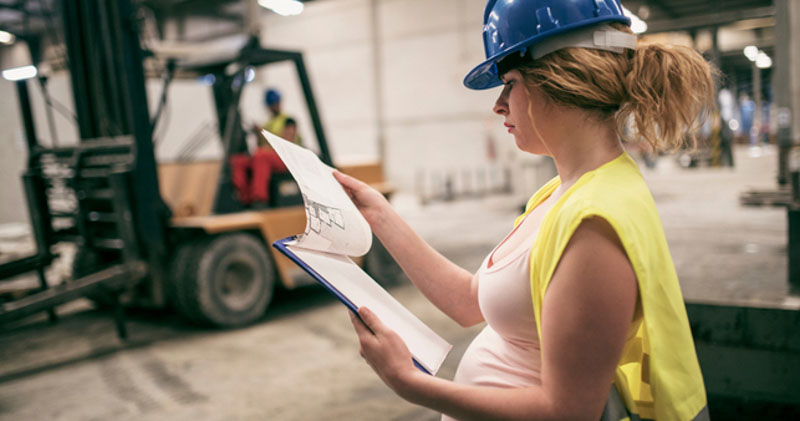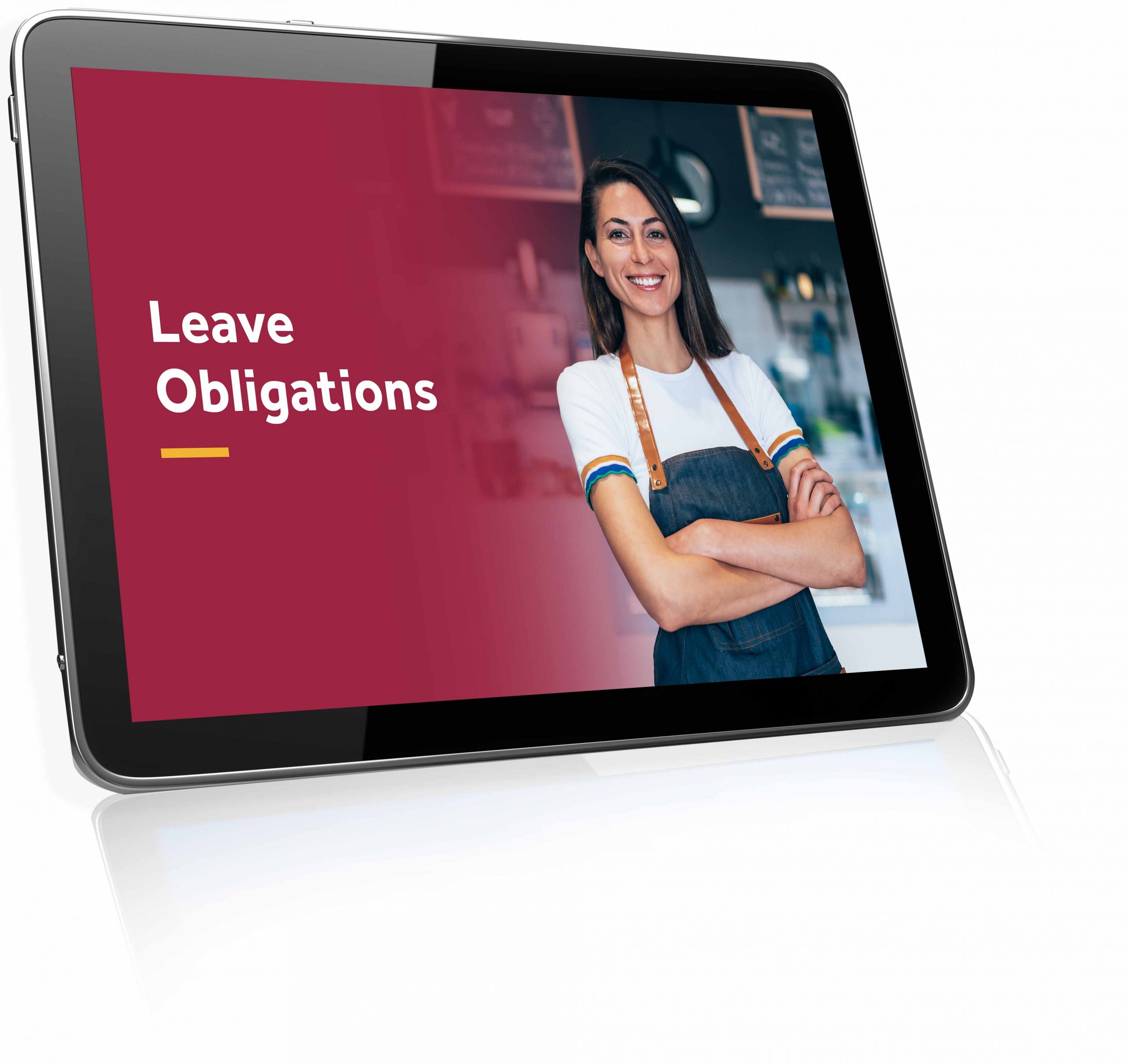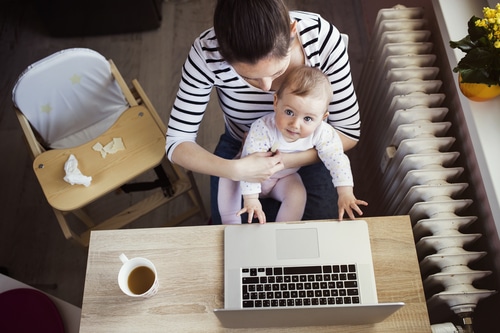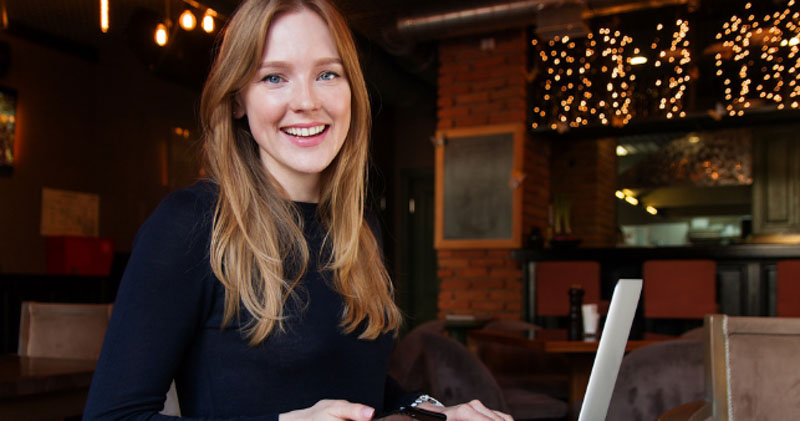
Parental leave is a category of leave an employee can take when they give birth, have a newly adopted child under the age of 16, or when an employee’s spouse or de-facto partner gives birth. The employee must have worked for their employer for at least 12 months prior and be the person primarily taking care of the child. Employees are entitled to 12 months unpaid parental leave, though some employers offer paid parental leave.
The Australian Government also offers paid parental leave to eligible employees as part of the Australian Government’s paid parental leave scheme.
What is the paid parental leave scheme?
The Australian Government provides financial support to eligible parents through the paid parental leave scheme, so they can take time off work to care for a newborn or newly adopted child.
If they are the primary carer, the birth mother of a newborn child or the adoptive parent of a newly adopted child, they can claim parental leave pay for up to 18 weeks from Services Australia, provided they meet certain conditions.
What is the paid parental leave pay rate?
Parental leave pay is based on the weekly national minimum wage rate, which as of 01 July 2023 is $882.80. The employee can get paid for up to 18 weeks, and the money is paid either directly to the employee or to the employer to pay to the employee.
Employees can use parental leave pay before, after or at the same time as their paid and unpaid entitlements such as annual leave, long service leave and unpaid parental leave.
Who is entitled to the paid parental leave scheme?
Full-time, part-time, casual, seasonal, contract and self-employed workers who meet the following requirements are entitled to access the paid parental leave scheme. They must be one of the following:
The birth mother of a newborn child.
The partner of the birth mother.
The child’s biological father.
The partner of the biological father.
An adoptive parent of the child.
The partner of an adoptive parent.
Another person caring for a child under exceptional circumstances.
Additionally:
To meet the work test requirement, the employee must have worked for you for at least 12 months before the expected adoption or birth date.
They must remain employed with you until at least the end of their paid parental leave period (without working during that period).
To meet the residency test requirements, they must be Australia-based.
To meet the income test requirements, they must have earned less than $151,350 before tax each year.
Besides having to meet an income test and the residency rules, parents must usually have worked at least 10 of the 13 months prior to the birth or adoption of their child in order to qualify for paid parental leave. This means they need to have worked a minimum of 330 hours, which is around 1 day a week throughout that 10-month period.
If the employee is on unpaid leave, it does not count towards the work test. However, for parents with a child born or adopted between 22 March 2020 and 31 March 2021 the work period was extended to 10 months out of the previous 20 months. This extension was given to provide access to the parental leave pay for parents whose children were born or adopted during the COVID-19 Pandemic.

Do you know your employees’ leave entitlements?
Understanding leave obligations can be a challenge for employers. This FREE E-Guide outlines employee entitlements for permanent, casual and shift workers and can help your business to stay compliant.
How is paid parental leave taken?
As of 01 July 2020, the paid parental leave scheme was altered to allow for parents of children born or adopted on or after 01 July 2020 to take one continuous paid parental leave period of up to 12 weeks (60 payable days). This leave needs to be taken in one block.
The employee is then eligible for an additional 30 days of flexible paid parental leave which must be used within 2 years of the child’s birth or adoption. These flexible days can be accessed one day at a time or in blocks.
What is dad and partner pay?
Dad and partner pay is for working dads or partners, including parents who are adopting a child, or a recently born child’s biological father. Dads and partners can get up to 2 weeks’ pay at the national minimum weekly wage of $882.80 (from 01 July 2023) if they are on unpaid leave and not working during this time. To get the 2 weeks of dad and partner pay, it must start within 50 weeks of their child’s birth or adoption. Centrelink pays it directly to the employee.
How does my employee receive paid parental leave?
The employee needs to apply directly to Centrelink for parental leave pay within 34 weeks of the birth or adoption of the child. Although the employee can apply before the birth or adoption of the child, they won’t get paid until afterwards.
Keeping in touch days
Your employee can access up to 10 keeping in touch days without losing their entitlement to paid parental leave. This is from the time they become their child’s primary carer until they return to work.
Keeping in touch days are a great way for employees to stay connected with the workplace. Whether it be to catch up with co-workers and employers, learn about new developments in the company, or attend training sessions to keep their skills up to date.
You and your employee must both agree for them to take part in a keeping in touch activity.
What does this mean for my business?
Employers may need to give Services Australia information about the business and the employee so they can check that the employee qualifies for parental leave pay. Also, employees need to take leave from work in order to access parental leave pay or dad and partner pay.
Services Australia can make the payment directly to the employee or give the funds to the employer to pay to the employee, the latter of which requires the employer to meet certain conditions.
In addition, in order to access flexible paid parental leave days, the employee must either take them before they return to work, or if they want to take them after they return to work, on days that they are on leave or not working.
Employees who want to use their flexible paid parental leave days when they return to work need to come to an agreement with their employer about how and when these flexible days will be taken. For example, the employer and employee can agree:
To reduce the hours or days of work.
To change the pattern of work.
To the employee taking additional unpaid leave.
Frequently Asked Questions
Does paid parental leave qualify as income?
Yes – paid parental leave forms part of an employee’s gross amount of taxable income.
How much is Centrelink paid parental leave?
The Services Australia parental leave pay rate is the same as the national minimum weekly wage and is currently (from 01 July 2023) $882.80 per week.
How long does Centrelink give paid parental leave for?
Employees can get parental leave pay for a maximum of 18 weeks, but the start date cannot be more than 34 weeks after the child’s birth or adoption.
Can you claim paid or unpaid maternity leave from work and Centrelink paid parental leave?
Yes, employees can take parental leave pay before, after or at the same time as they’re getting paid or unpaid parental leave from their employer.
Can you claim paid parental leave if you are self-employed?
Yes, self-employed parents can receive paid parental leave, provided they have been actively working and meet Services Australia’s requirements.
Who pays for paid parental leave in Australia?
The Australian Government. Parental leave pay is administered through Services Australia (via Centrelink) who may deposit funds in the employers account for the employer to pay the employee as part of their normal pay cycle.
What is the threshold for paid parental leave?
In order to currently meet the income test for parental leave pay, an employee must have an annual income of less than $151,350 before tax. The employee would need to provide information regarding their financial circumstances to Services Australia who will decide whether they are entitled to receive payment.
Can I receive JobKeeper pay at the same time as parental leave pay?
No, parents can’t get JobKeeper pay at the same time as parental leave pay. They can get parental leave pay after the payments they get from the JobKeeper Wage subsidy end, but only if they didn’t work since their child’s birth or adoption.
What is flexible paid parental leave?
Parents of a child born or adopted on or after 1 July 2020 will get up to 30 flexible paid parental leave days in addition to their 12-week paid parental leave period. The paid parental leave period must be taken in one block, but the employer and employee can agree when the employee will take the flexible paid parental leave days, as long as they are taken within 24 months of the child’s date of birth or adoption.
When should an employee tell an employer about paid parental leave?
The employee should notify the employer at least 10 weeks before the child’s expected date of birth or adoption.
The employer may need to register with the Paid Parental Leave scheme for employers on the Services Australia website. 10 weeks of notice gives the employer adequate time to complete the process involved.
If you own an Australian business and have issues surrounding parental leave, call our FREE Advice Line on 1300 651 415 to speak with an Employsure expert.


